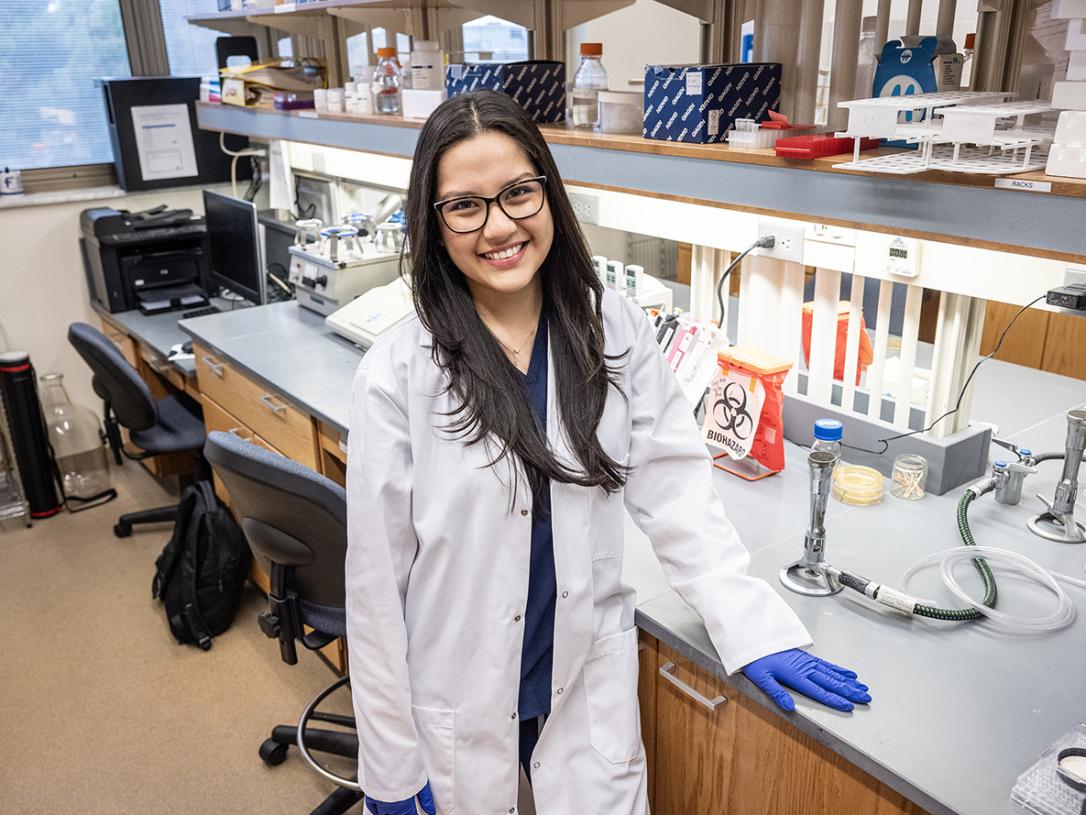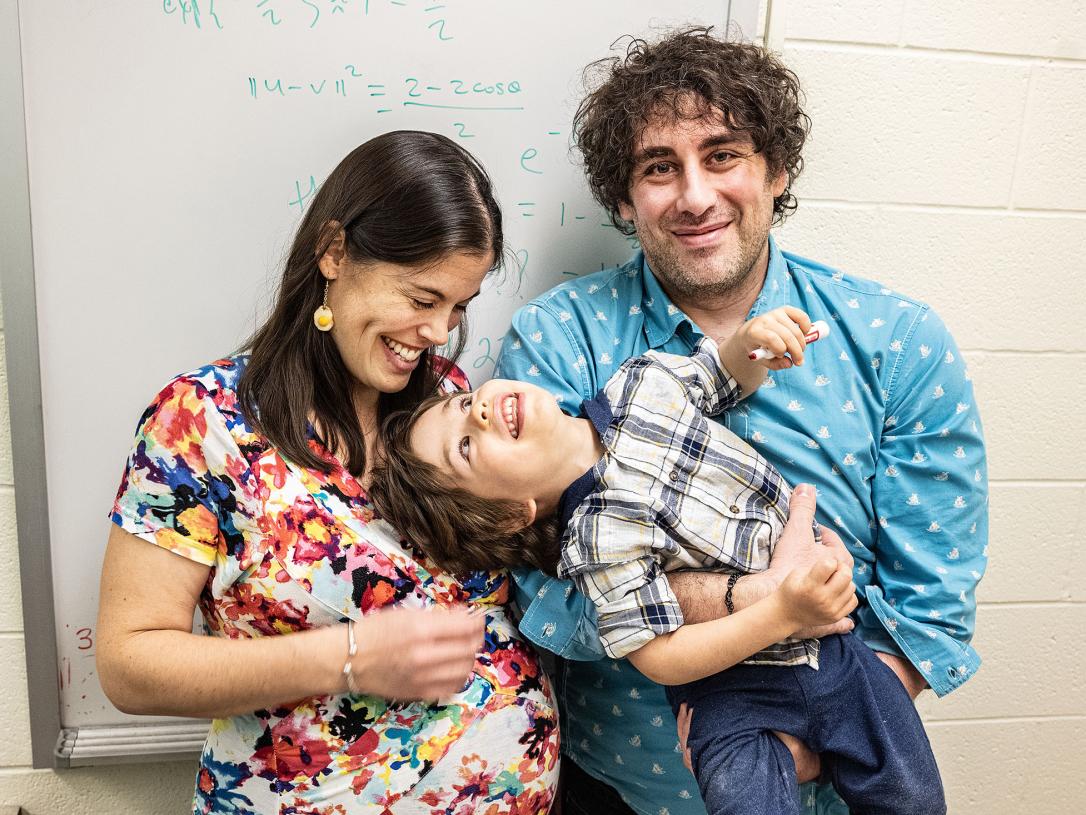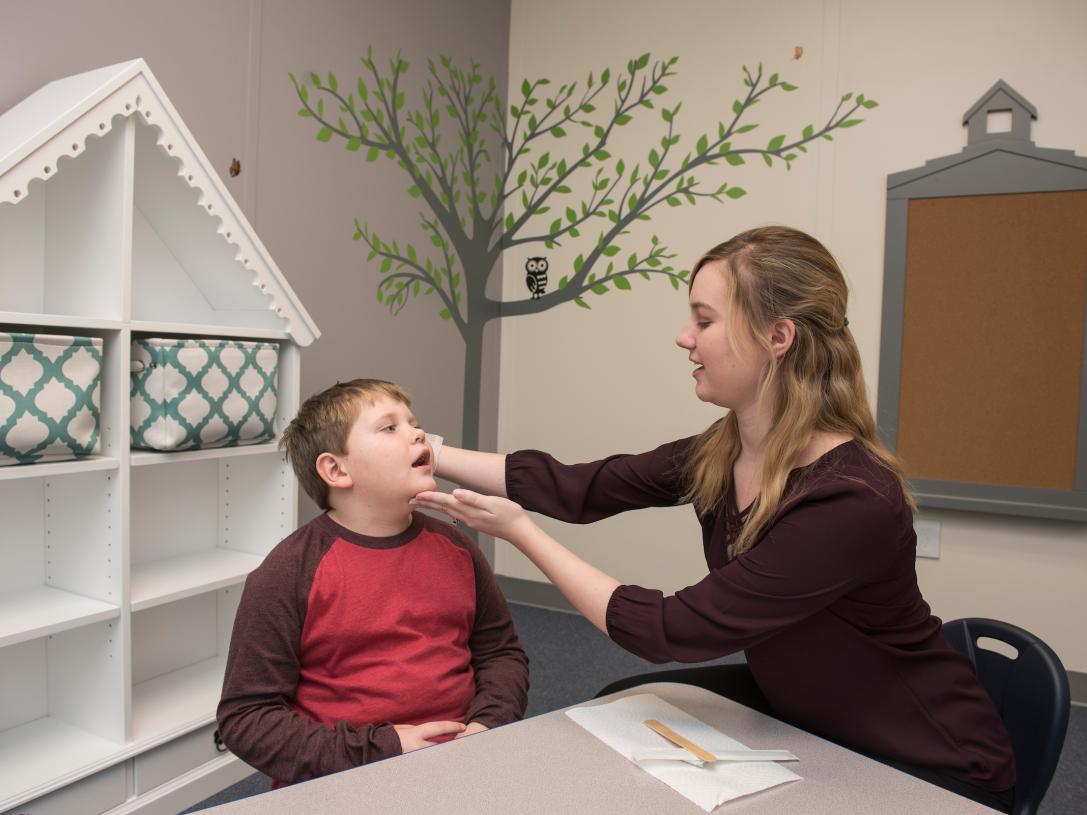
News Release
PFW alumna named to prestigious leadership program
FORT WAYNE, Ind.—The National Geographic Society recently announced its third Early Career Leadership Cohort, which is a 12-month program that empowers a select group of early career grant recipients with skills, experiences, and support they can use to help drive their careers to the next level. Callie Veelenturf, a 2017 Purdue University Fort Wayne graduate with a Master of Science in biology, is one of the 2020–21 cohort of 15 National Geographic Explorers.
“This is an incredible opportunity to learn and grow with an inspiring group of explorers and change makers,” said Veelenturf upon hearing of her appointment. “I’ve dreamed of conducting conservation research internationally and being supported by the National Geographic Society. To be actually living this dream is surreal.”
Veelenturf’s inclusion in the cohort places her in exclusive company.
“Our goal is to help seed future generations of leaders, individuals who, together with National Geographic, will illuminate and protect the wonder of our world with fervor, commitment, and eternal curiosity,” explained Alex Moen, the chief explorer engagement officer at the National Geographic Society. “We are thrilled to welcome our 2020–21 class, a diverse group representing 13 countries that include regions in Africa, Asia-Pacific, Europe, Latin America, and North America. These remarkable Explorers show the passion that we look for and foster.”
Veelenturf, whose hometown is Norfolk, Massachusetts, earned a Bachelor of Science in marine biology with a minor in wildlife conservation biology from the University of Rhode Island. She decided to attend Purdue Fort Wayne for her graduate degree because she wanted to gain experience in research, fieldwork, and international project management to grow as a scientist and conservationist.
“Professor Frank Paladino is world renowned as an expert in leatherback biology and conservation,” noted Veelenturf. “For me, with a desire to study this ancient marine reptile, it was a no brainer that I needed to reach out to him to see if he had space in his lab! He did, and I worked as a teaching assistant in his marine biology class in Costa Rica and spent time volunteering at The Leatherback Trust’s research station in Playa Grande, Costa Rica.”
For his part, Professor Paladino has high praise for his former student: “Being selected as a National Geographic Society scholar is a great honor, and will be an important step for Callie, as she works to be a visible voice from this younger generation of conservation biologists.”
Veelenturf also received a National Geographic Explorer grant for 2019–20 in which she conducted a pilot study documenting sea turtle use of potential nesting and foraging grounds in the Pearl Islands Archipelago in Panama.
“We conducted surveys within the local community to understand the history of human use of sea turtles in the Archipelago and to document the largest threats to sea turtles in this area such as intentional take, wildlife trade, consumption, and fisheries bycatch,” recalled Veelenturf. “Having the work be funded by the National Geographic Society undoubtedly opened doors for us in our collaborations with local communities, fishermen, and government agencies.”
Veelenturf conducted her master’s thesis research nearly half a world away from Panama, on the west coast of Africa, where she studied effects of sea level rise, nest location, and environmental characteristics on reproductive success in green and leatherback sea turtles on Bioko Island, Equatorial Guinea, through the Bioko Marine Turtle Program. Veelenturf was co-advised by Shaya Honarvar, Ph.D., founder and director of the program and a research associate at Purdue Fort Wayne.
“This was an unbelievable experience living in the jungle in West Africa, working with the local community, local students, and biology graduates from the USA as a passive protection against poaching on the five sea turtle nesting beaches,” Veelenturf said.
As to her future, Veelenturf is currently applying to Ph.D. programs and is working on publishing results of her studies. Her hopes for the future include working in conservation science, spanning the space between research and policy, while trying to maximize her impact on marine conservation.
Veelenturf has started a nonprofit organization called The Leatherback Project that is dedicated to the worldwide conservation of the leatherback sea turtle through conservation research, education, and advocacy initiatives. She hopes to continue to develop the organization while collaborating with local communities, students, and fishermen throughout the leatherback’s global range.
Along with what’s already on her plate, Veelenturf and the other members of the cohort will meet monthly, most likely virtually, for training on core leadership topics and to gain insight from National Geographic experts. The Explorers will be working with their mentors throughout the program and will partner with a National Geographic certified educator to create pioneering learning experiences for students.
More information on the National Geographic Early Career Cohort is available on its website.
To learn more about this story, contact Susan Alderman, director of media relations, at [email protected] or 260-489-5349.
###

from the Article




